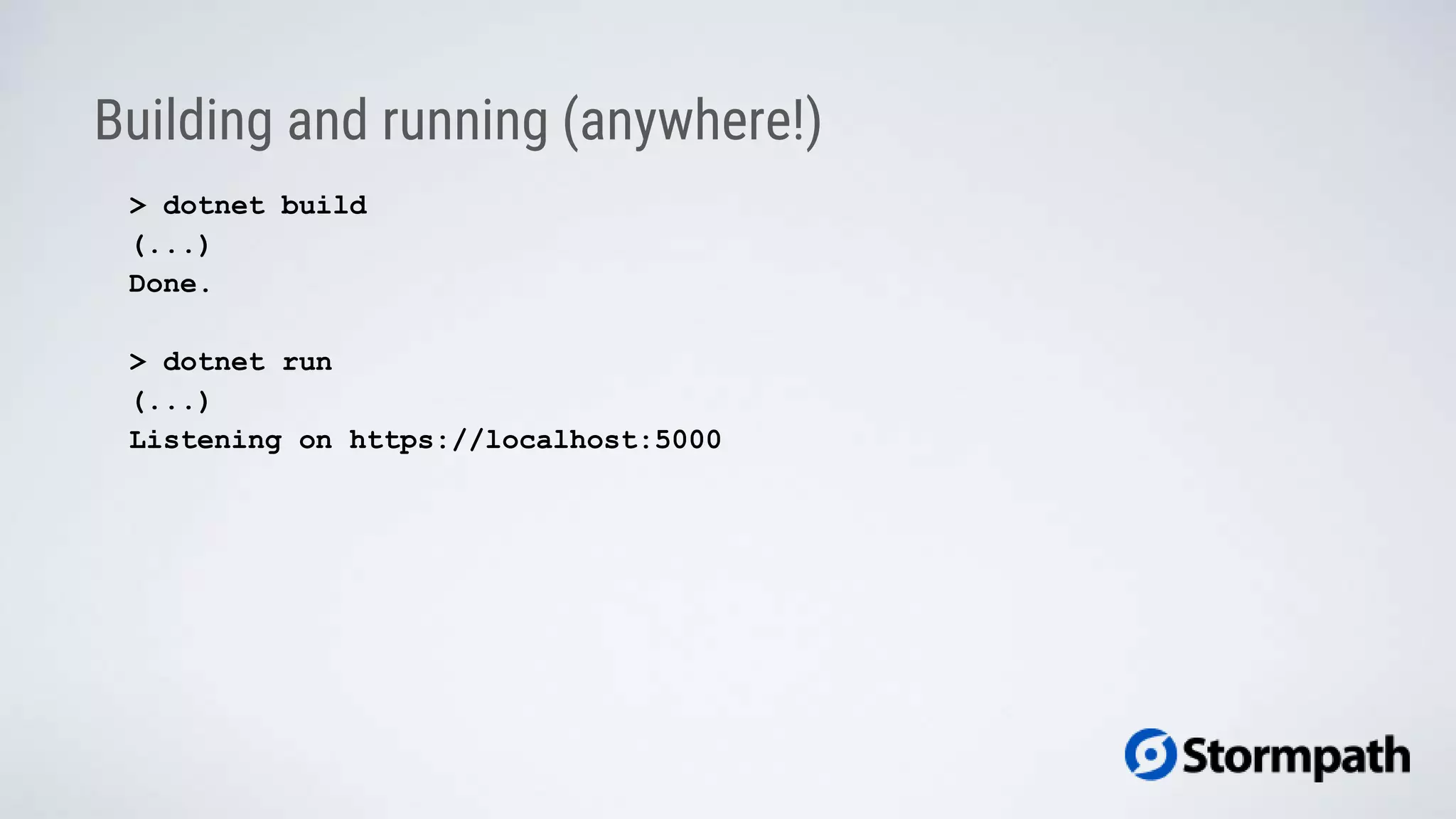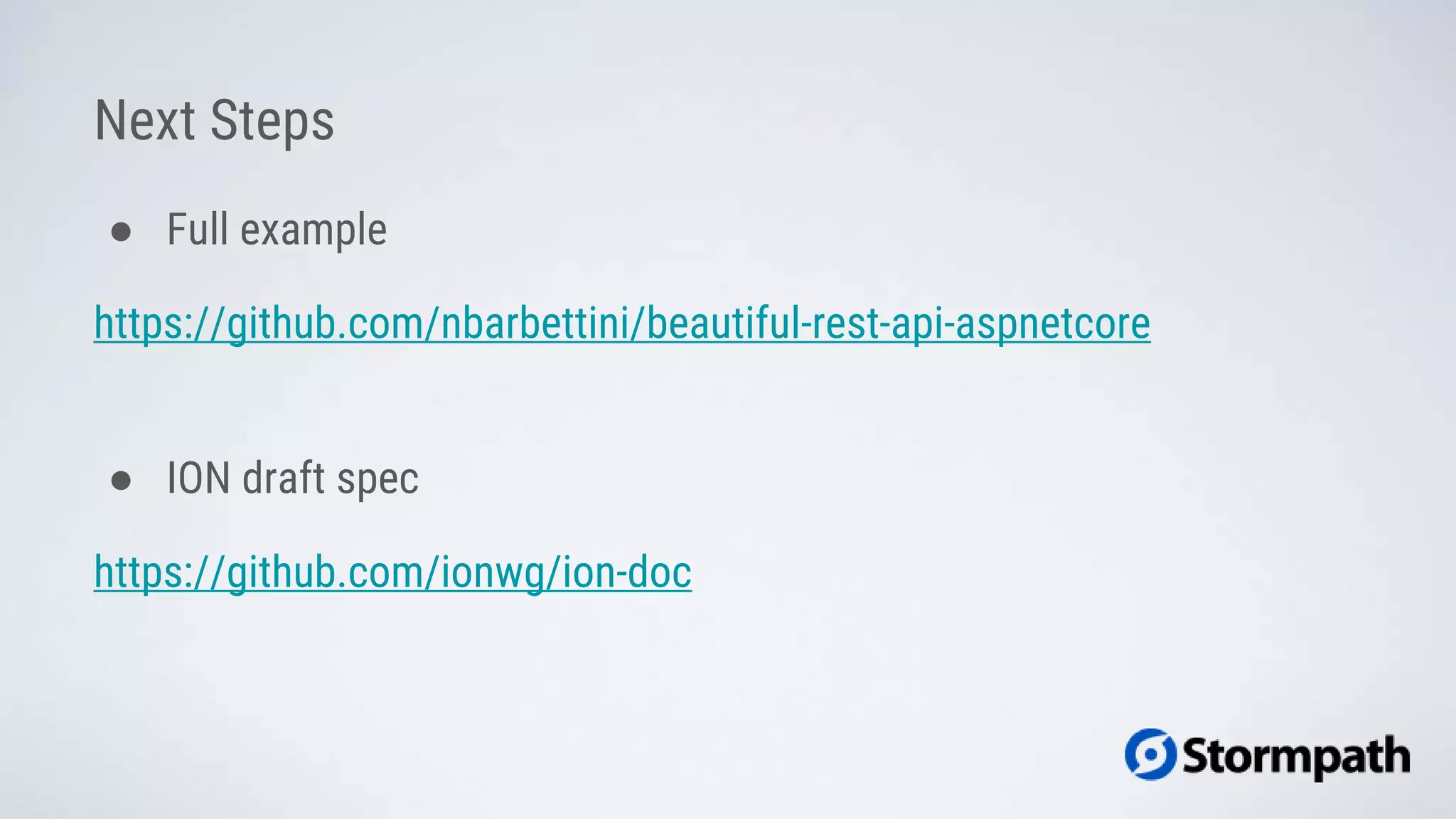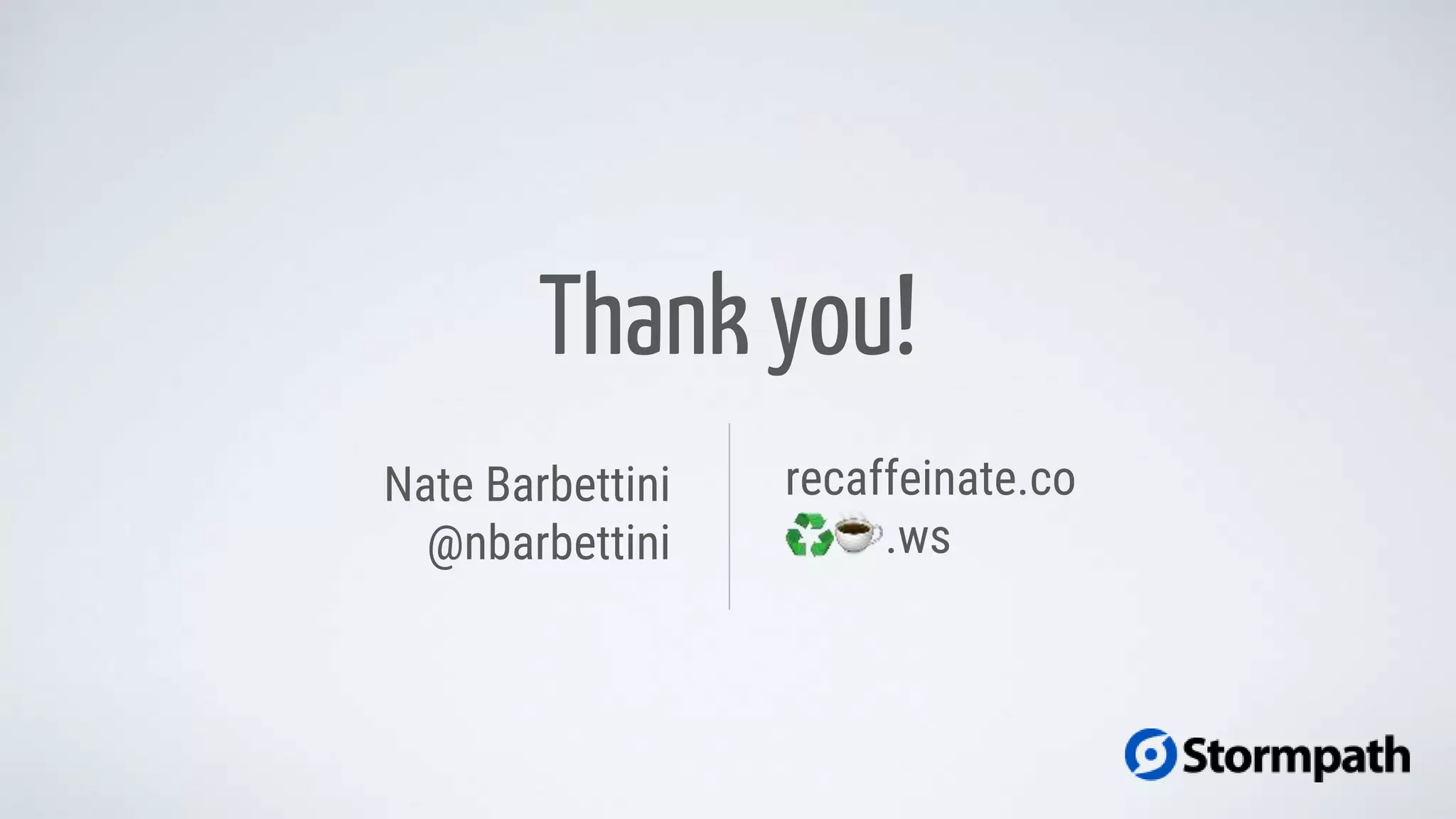The document discusses best practices for designing REST APIs, including following the HATEOAS principle where API responses should document available actions and links. It provides examples of building RESTful APIs in ASP.NET Core that represent resources and collections, use HTTP verbs to represent actions, and are discoverable through HATEOAS links in responses. Code samples demonstrate getting single and collections of users with metadata links and building an API root response.
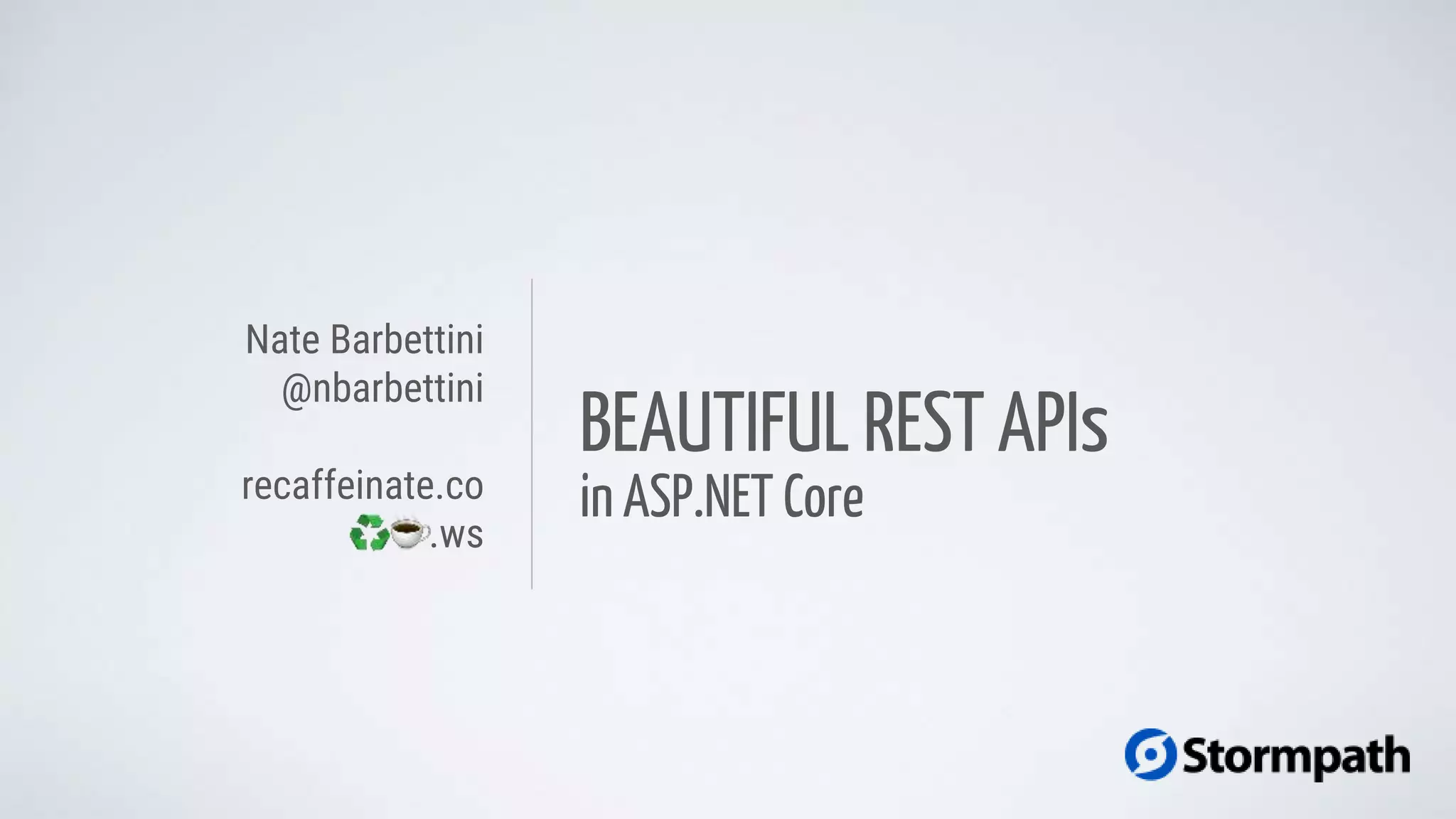
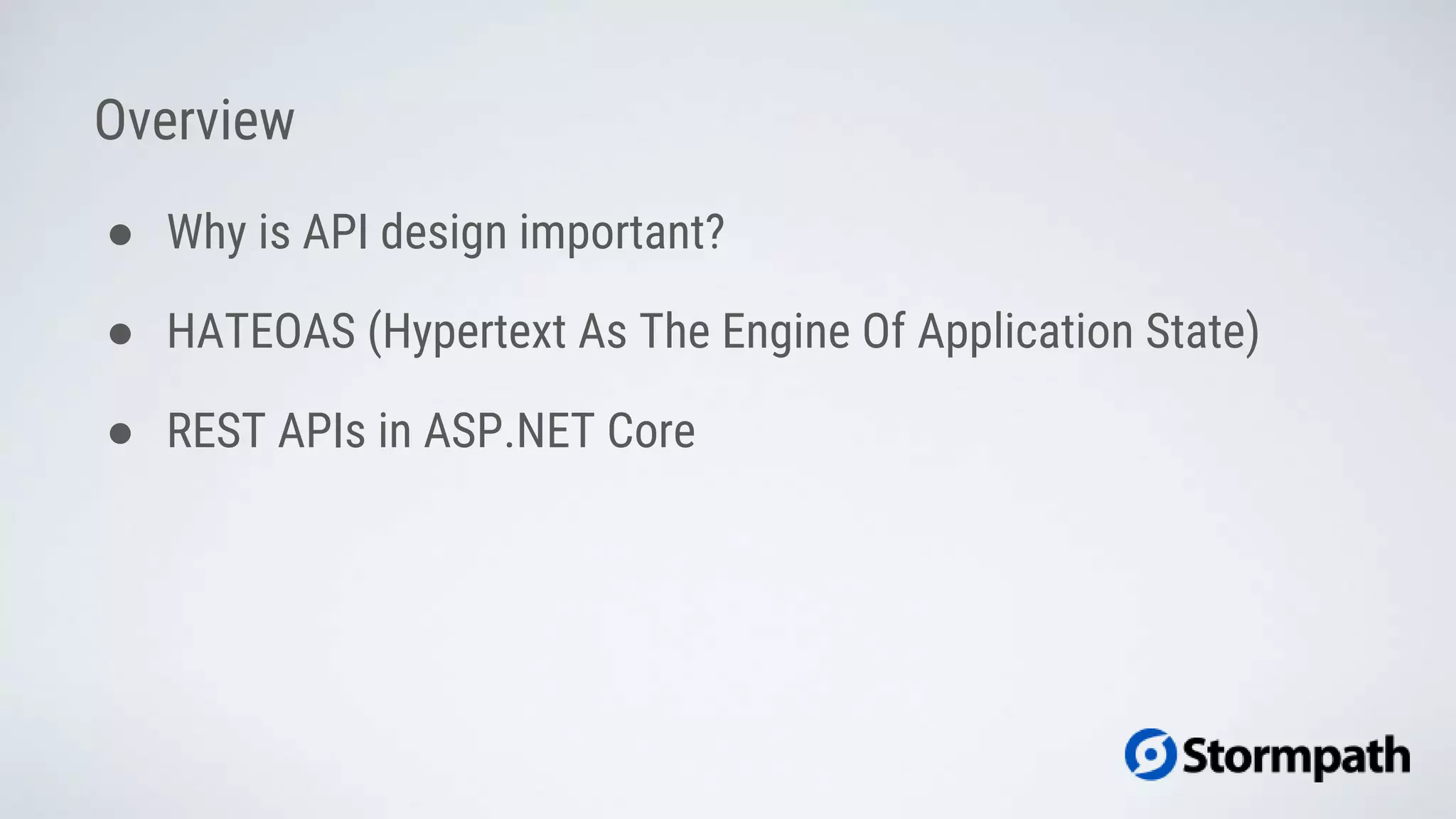
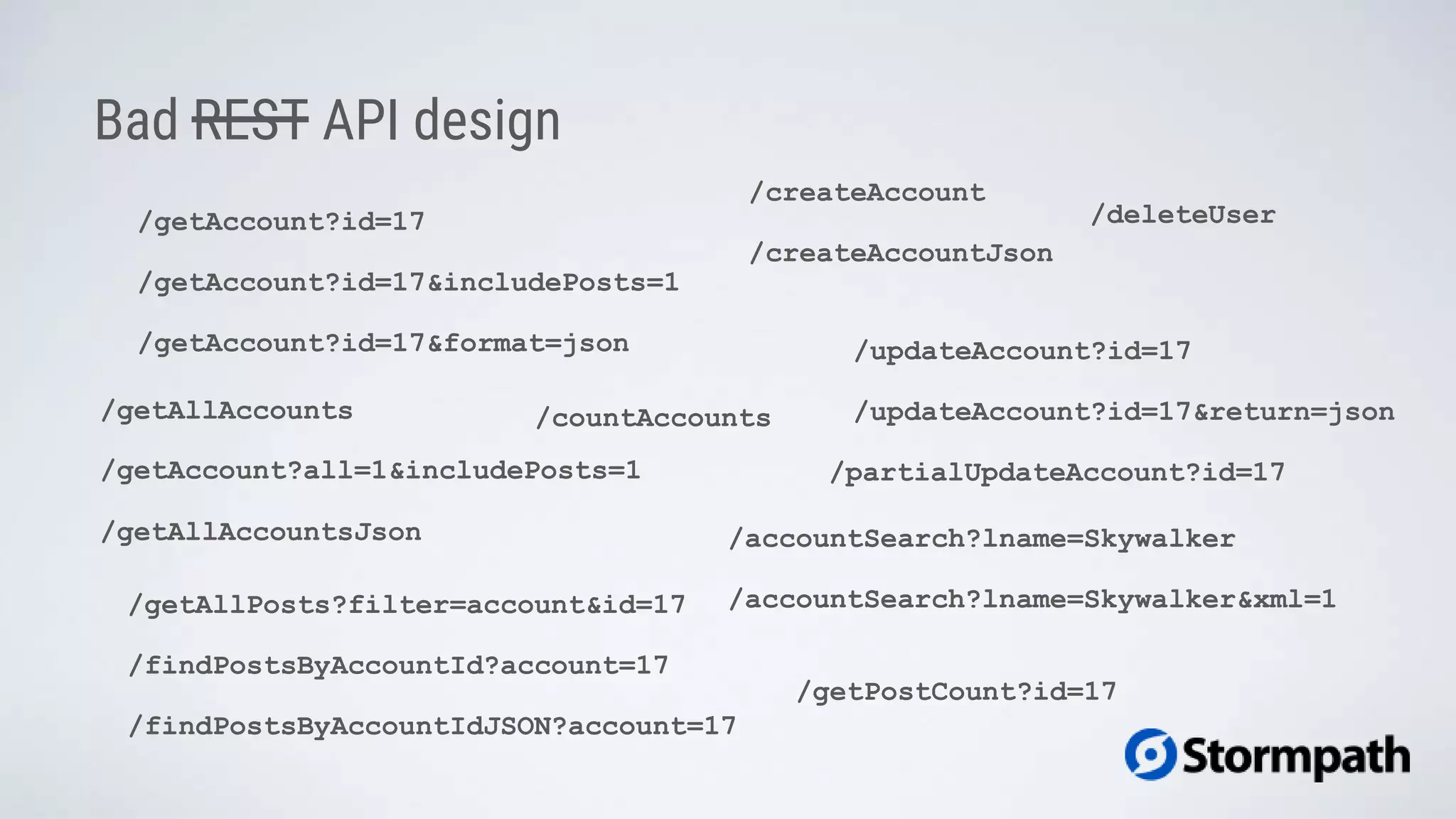
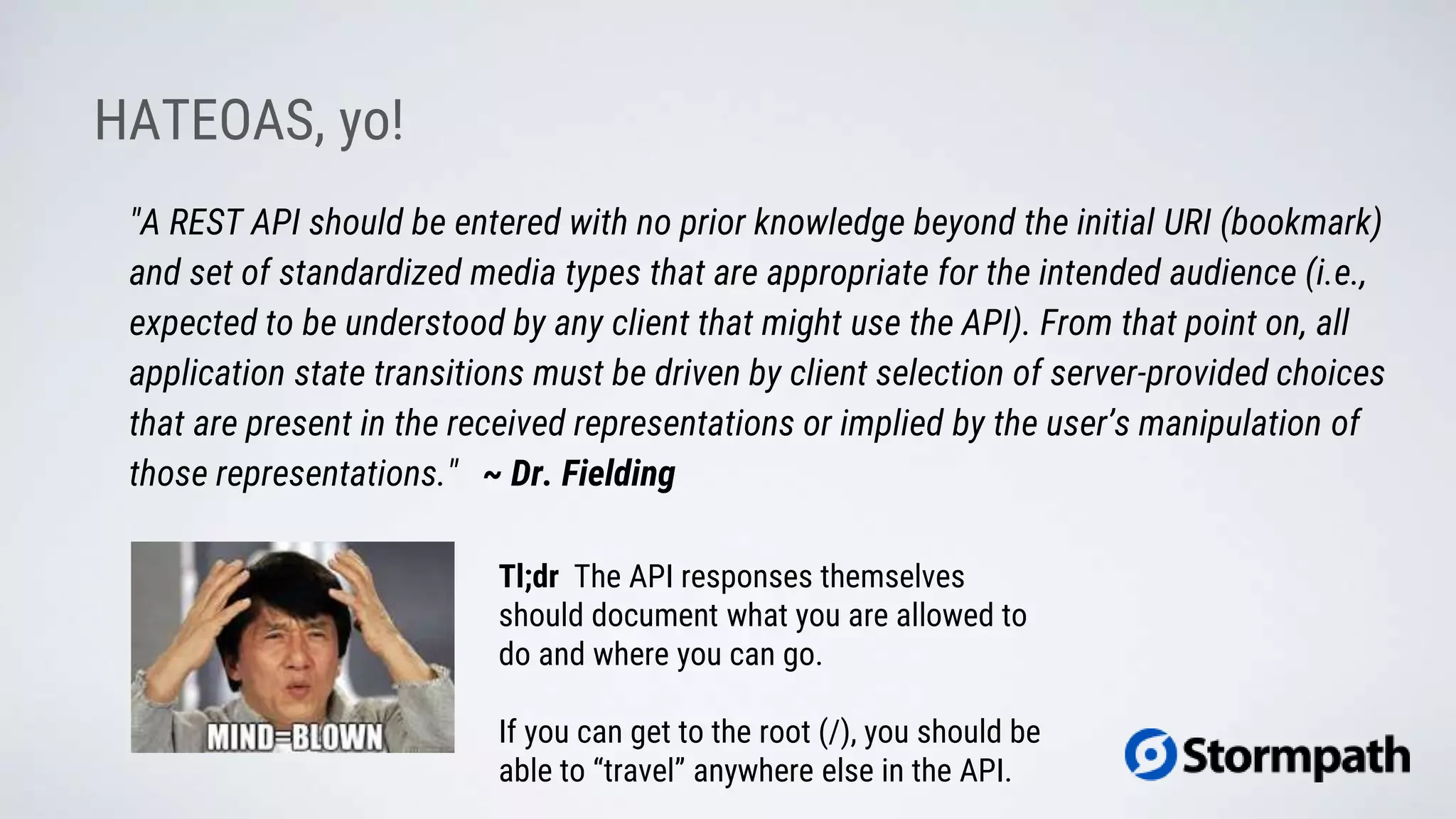
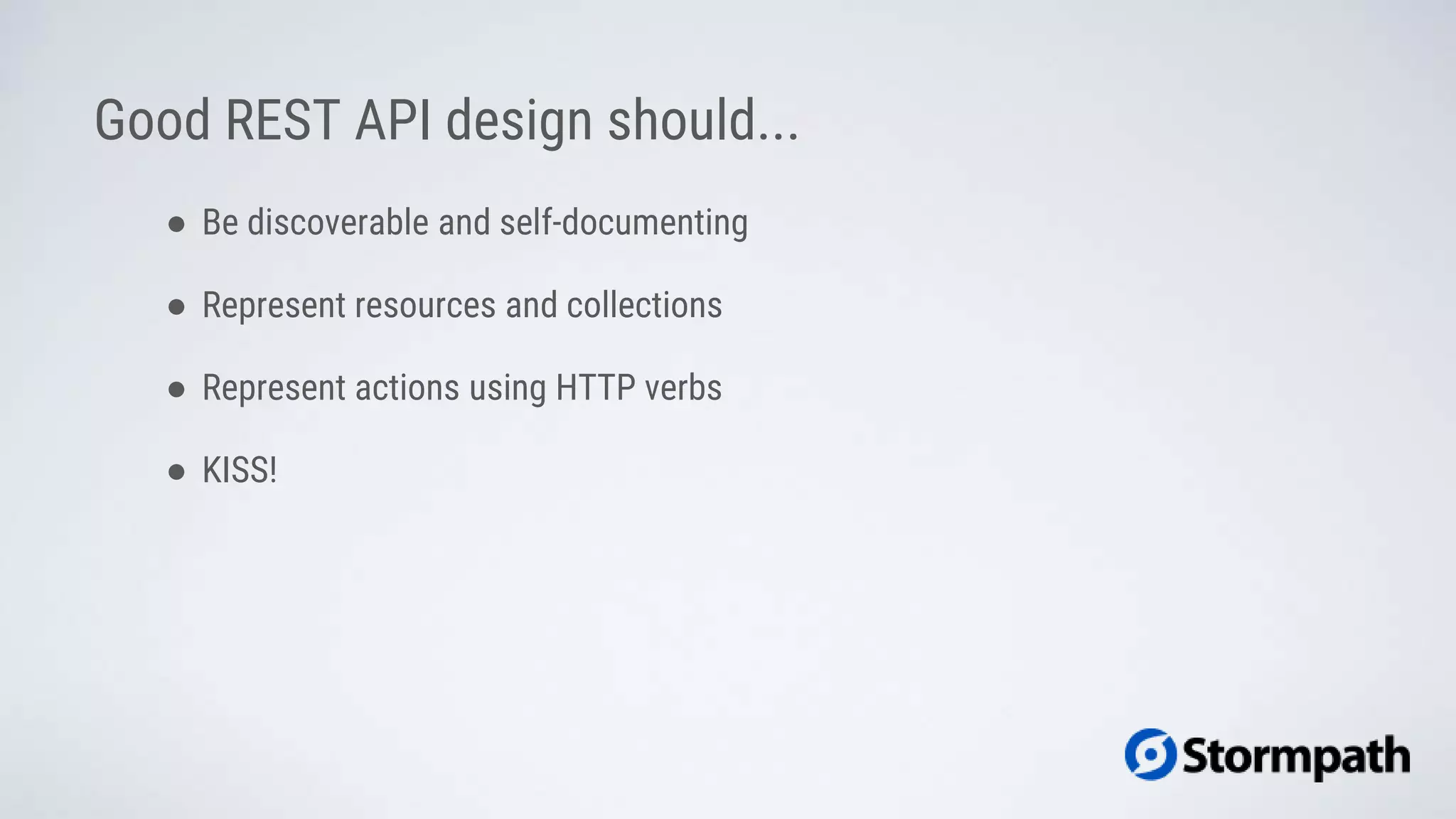
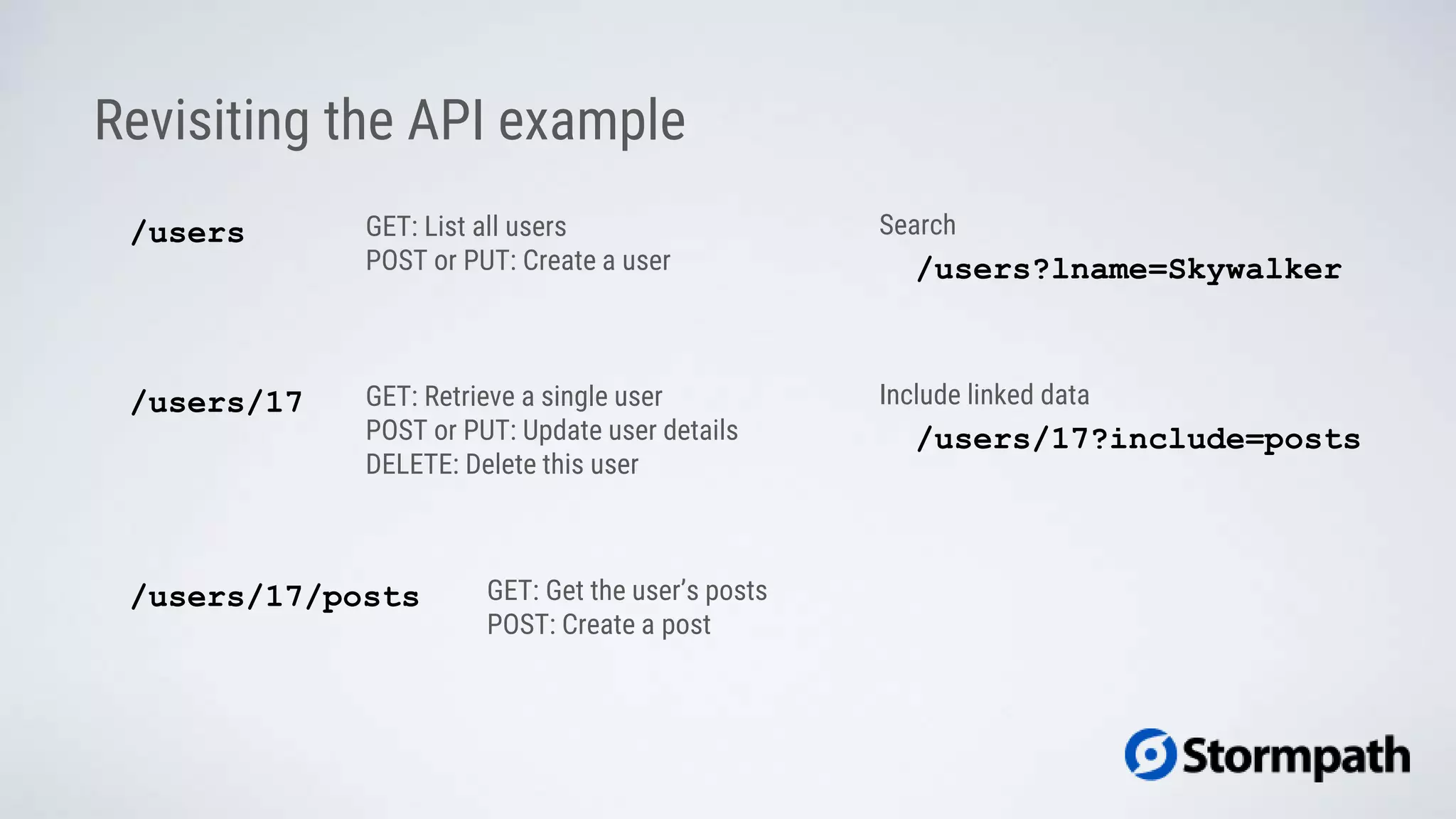
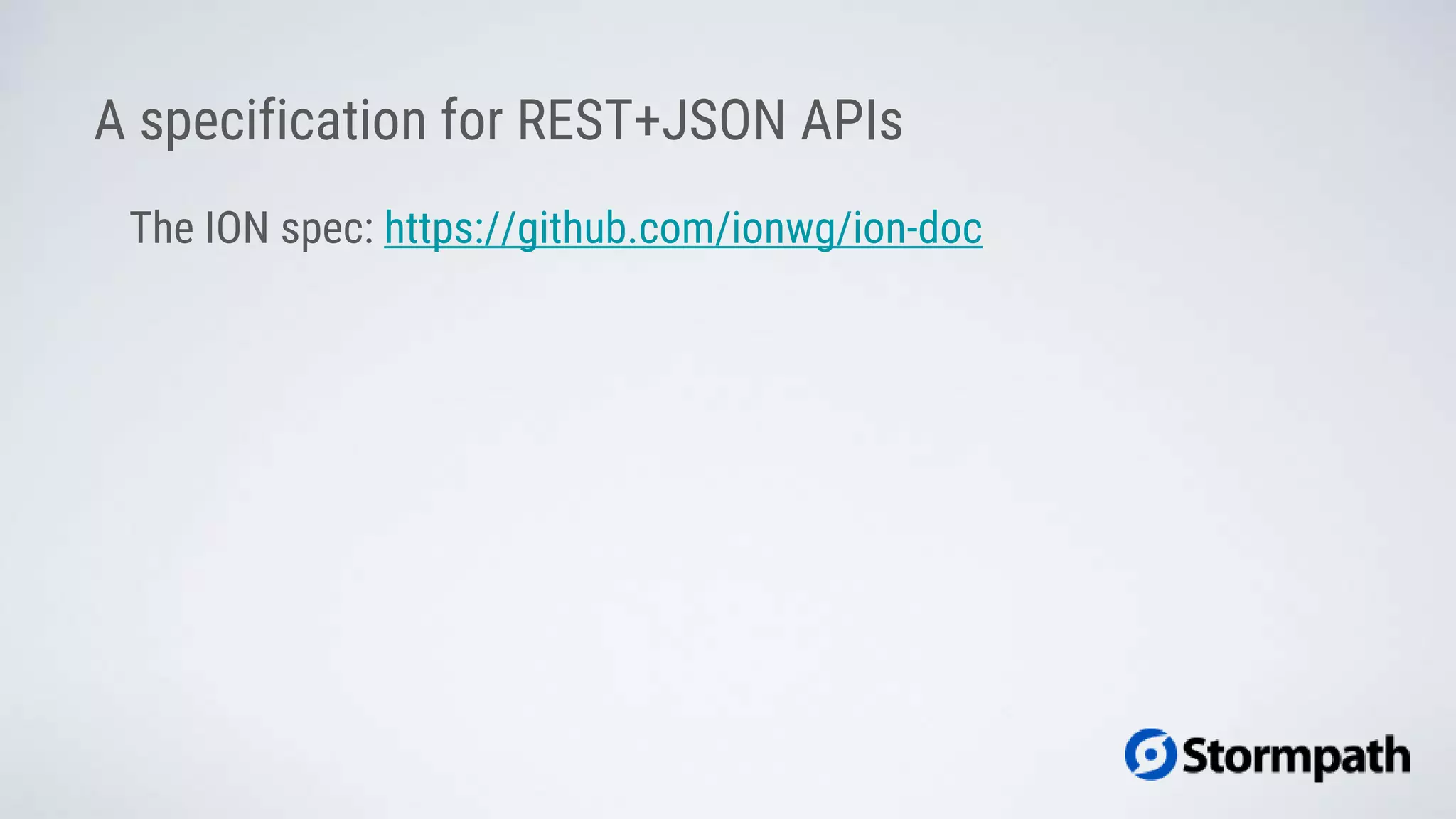
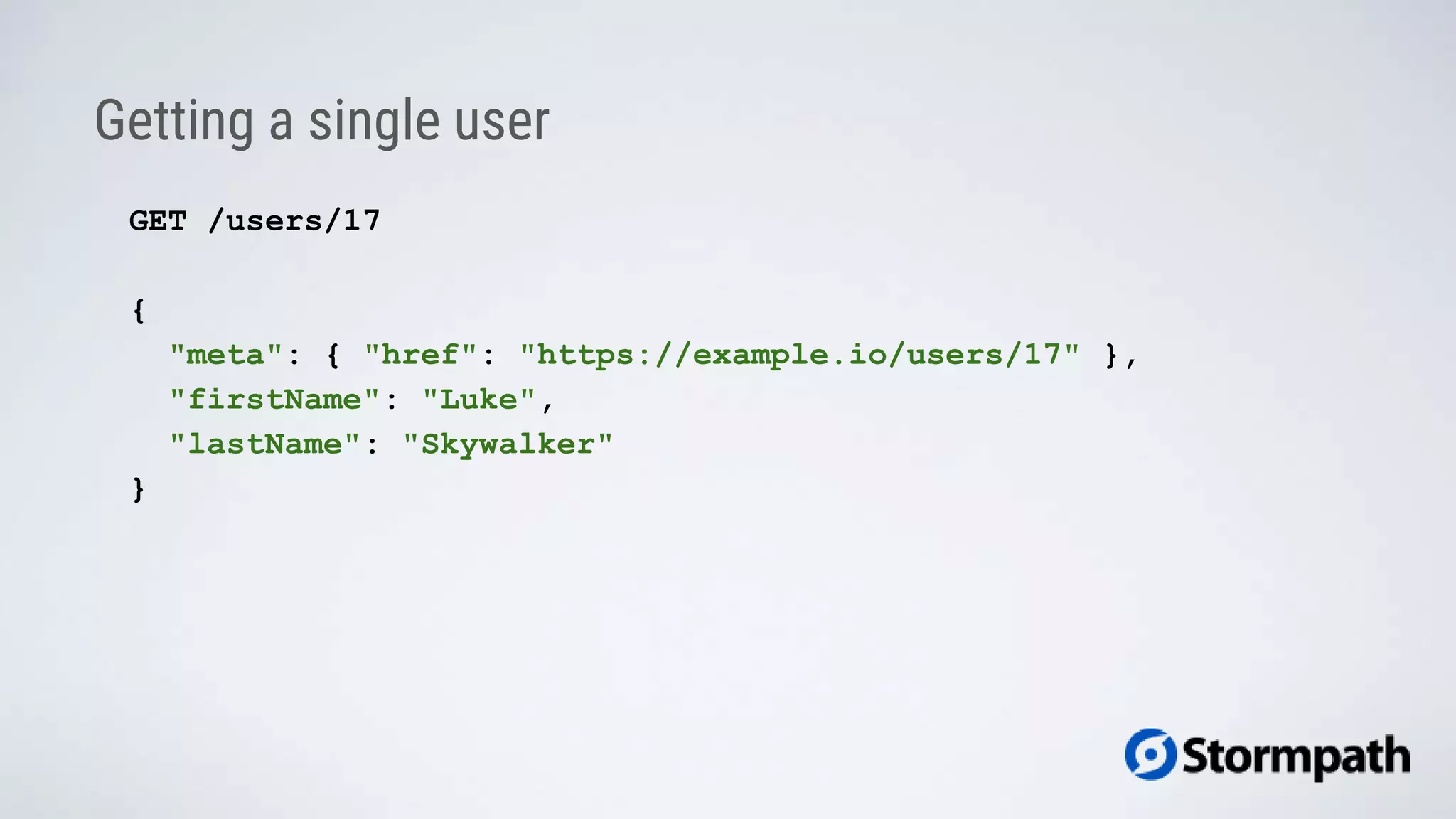
![Getting a list of users
GET /users
{
"meta": { "href": "https://example.io/users", "rel": ["collection"] },
"items": [{
"meta": { "href": "https://example.io/users/17" },
"firstName": "Luke",
"lastName": "Skywalker"
}, {
"meta": { "href": "https://example.io/users/18" },
"firstName": "Han",
"lastName": "Solo"
}]
}](https://image.slidesharecdn.com/buildingbeautifulrestapiswithasp-160819183829/75/Building-Beautiful-REST-APIs-in-ASP-NET-Core-9-2048.jpg)
![Discoverable forms
GET /users
{
...
"create": {
"meta": {
"href": "https://example.io/users",
"rel": ["create-form"],
"method": "post"
},
"items": [
{ "name": "firstName" },
{ "name": "lastName" }
]
}
}](https://image.slidesharecdn.com/buildingbeautifulrestapiswithasp-160819183829/75/Building-Beautiful-REST-APIs-in-ASP-NET-Core-10-2048.jpg)
![Discoverable search
GET /users
{
...
"search": {
"meta": {
"href": "https://example.io/users",
"rel": ["search-form"],
"method": "get"
},
"items": [
{ "name": "fname" },
{ "name": "lname" }
]
}
}](https://image.slidesharecdn.com/buildingbeautifulrestapiswithasp-160819183829/75/Building-Beautiful-REST-APIs-in-ASP-NET-Core-11-2048.jpg)
![The starting point (API root)
GET /
{
"meta": { "href": "https://example.io/" },
"users": {
"meta": {
"href": "https://example.io/users",
"rel": ["collection"],
}
}
}](https://image.slidesharecdn.com/buildingbeautifulrestapiswithasp-160819183829/75/Building-Beautiful-REST-APIs-in-ASP-NET-Core-12-2048.jpg)
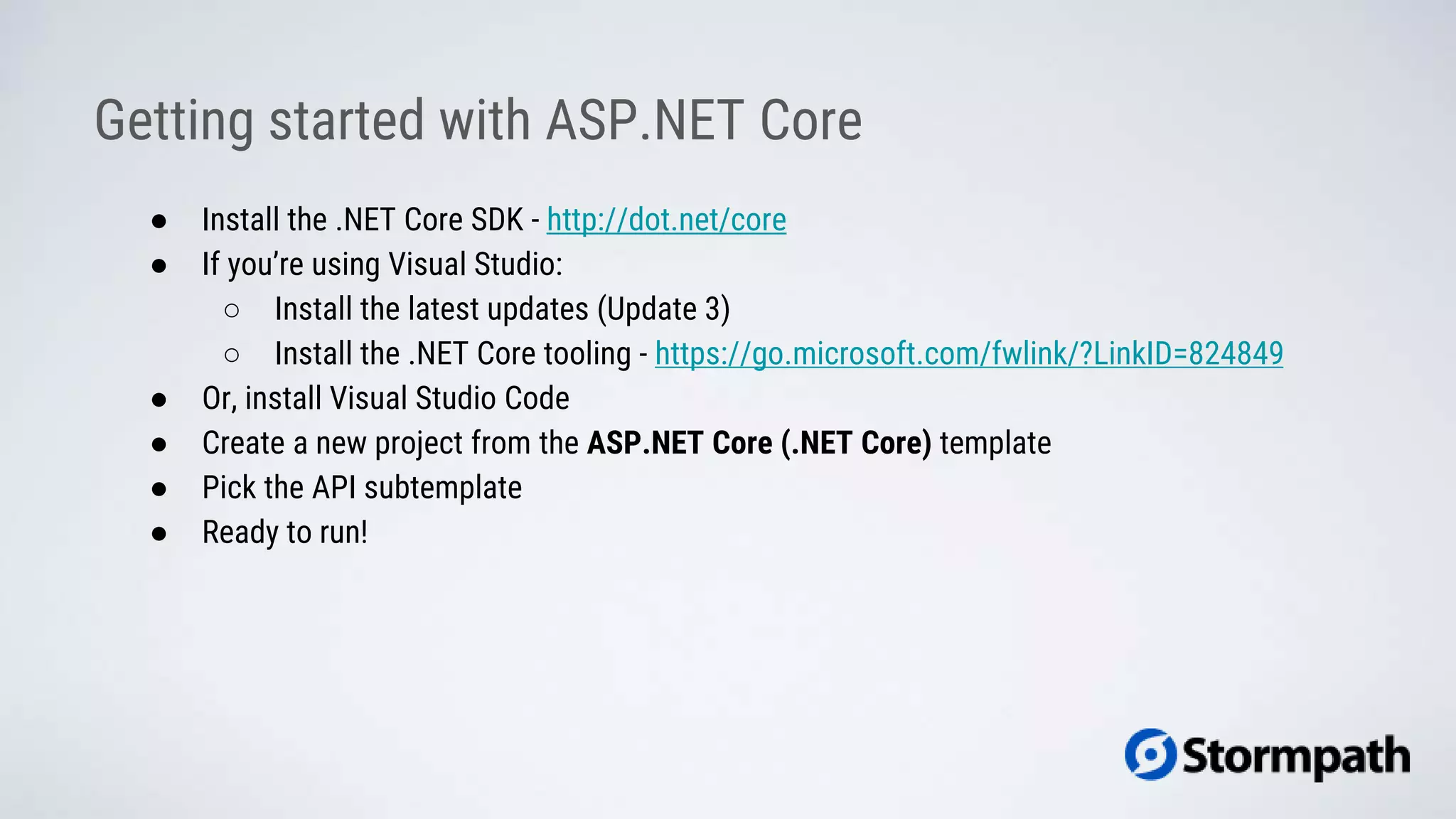
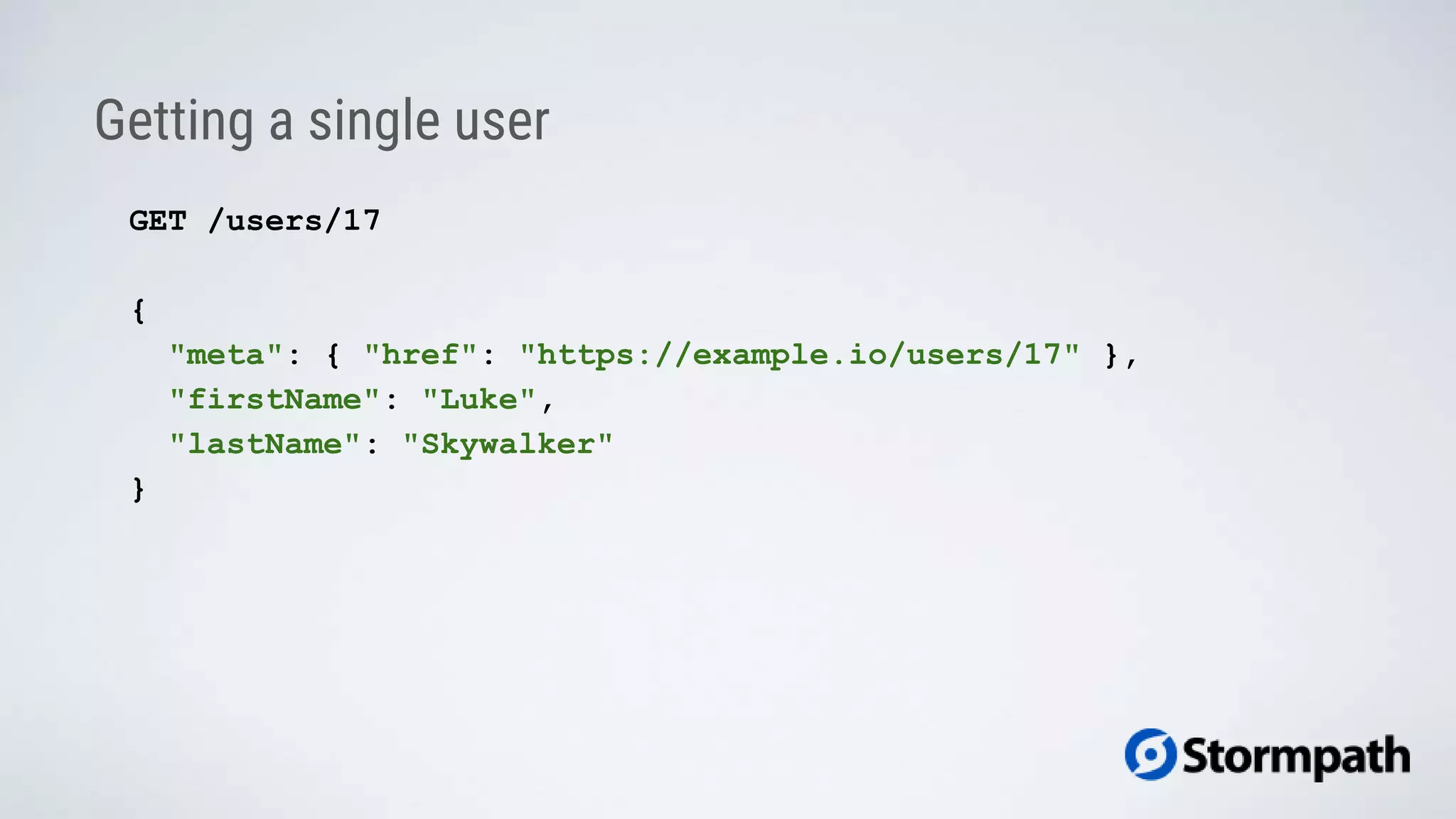
![public class Link
{
public string Href { get; set; }
}
public abstract class Resource
{
[JsonProperty(Order = -2)]
public Link Meta { get; set; }
}
Getting a single user](https://image.slidesharecdn.com/buildingbeautifulrestapiswithasp-160819183829/75/Building-Beautiful-REST-APIs-in-ASP-NET-Core-15-2048.jpg)
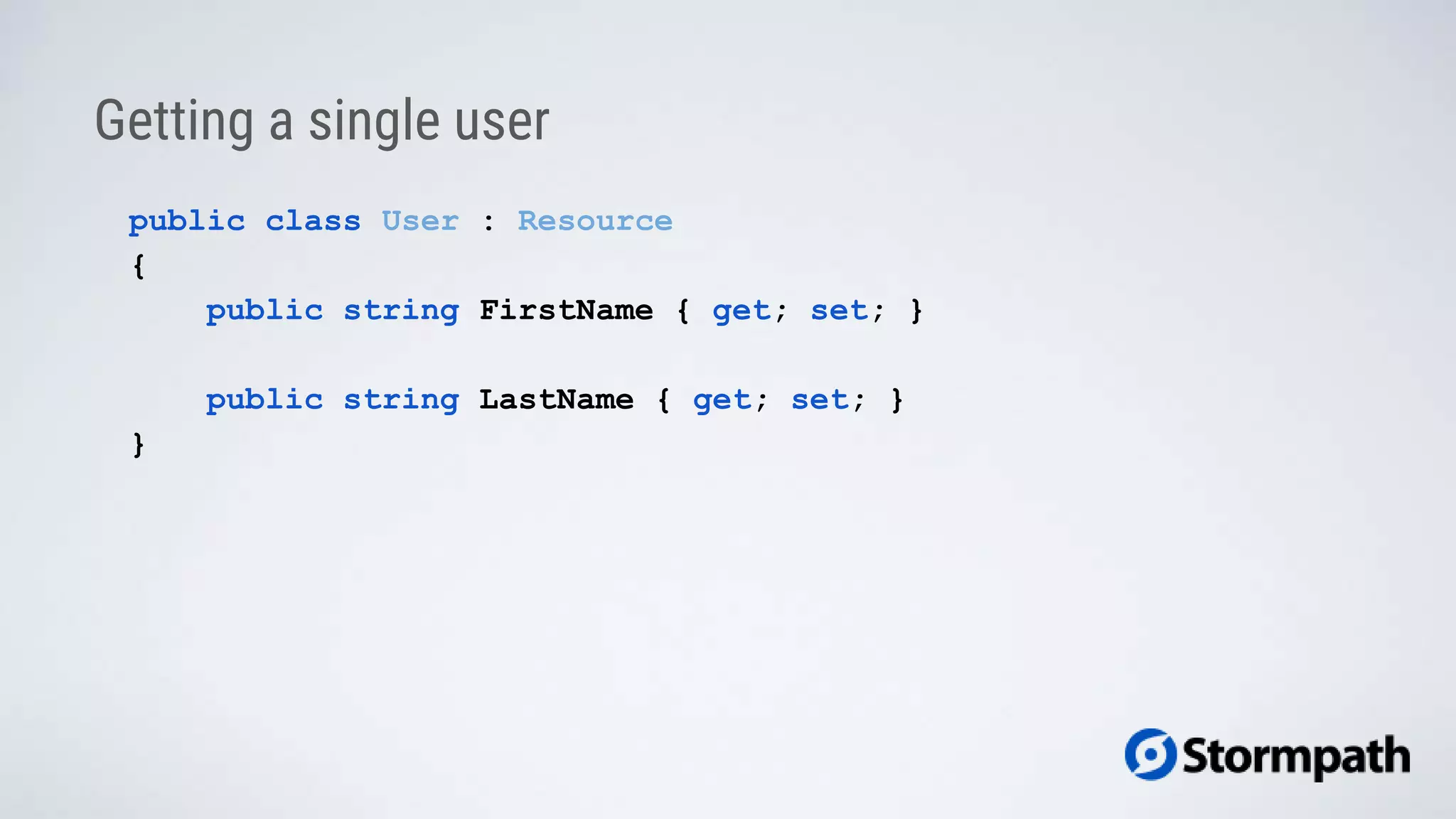
![[Route("/users")]
public class UsersController : Controller
{
private readonly BulletinBoardDbContext _context;
private readonly IUrlHelperFactory _urlHelperFactory;
public UsersController(
BulletinBoardDbContext context,
IUrlHelperFactory urlHelperFactory)
{
_context = context;
_urlHelperFactory = urlHelperFactory;
}
Getting a single user](https://image.slidesharecdn.com/buildingbeautifulrestapiswithasp-160819183829/75/Building-Beautiful-REST-APIs-in-ASP-NET-Core-17-2048.jpg)
![[Route("{id}")]
public async Task<IActionResult> GetUser(string id)
{
var user = await _context.Users.SingleOrDefaultAsync(x => x.Id == id);
if (user == null) return NotFound();
var urlHelper = _urlHelperFactory.GetUrlHelper(ControllerContext);
var url = urlHelper.Link("default", new
{
controller = "users",
id = user.Id
});
var response = new User()
{
Meta = new Link() { Href = url },
FirstName = user.FirstName,
LastName = user.LastName
};
return Ok(response);
}
Getting a single user](https://image.slidesharecdn.com/buildingbeautifulrestapiswithasp-160819183829/75/Building-Beautiful-REST-APIs-in-ASP-NET-Core-18-2048.jpg)
![Getting a list of users
GET /users
{
"meta": { "href": "https://example.io/users", "rel": ["collection"] },
"items": [{
"meta": { "href": "https://example.io/users/17" },
"firstName": "Luke",
"lastName": "Skywalker"
}, {
"meta": { "href": "https://example.io/users/18" },
"firstName": "Han",
"lastName": "Solo"
}]
}](https://image.slidesharecdn.com/buildingbeautifulrestapiswithasp-160819183829/75/Building-Beautiful-REST-APIs-in-ASP-NET-Core-19-2048.jpg)
![Getting a list of users
public class Link
{
public string Href { get; set; }
[JsonProperty(PropertyName = "rel", NullValueHandling = NullValueHandling.Ignore)]
public string[] Relations { get; set; }
}](https://image.slidesharecdn.com/buildingbeautifulrestapiswithasp-160819183829/75/Building-Beautiful-REST-APIs-in-ASP-NET-Core-20-2048.jpg)
![Getting a list of users
public class Collection<T> : Resource
{
public T[] Items { get; set; }
}](https://image.slidesharecdn.com/buildingbeautifulrestapiswithasp-160819183829/75/Building-Beautiful-REST-APIs-in-ASP-NET-Core-21-2048.jpg)
![Getting a list of users
public async Task<IActionResult> GetAll()
{
var urlHelper = _urlHelperFactory.GetUrlHelper(ControllerContext);
var allUsers = await _context.Users.ToArrayAsync();
var projected = allUsers.Select(x => new User() {
Meta = new Link() {
Href = urlHelper.Link("default", new { controller = "users", id = x.Id })
},
FirstName = x.FirstName,
LastName = x.LastName
});
var response = new Collection<User>()
{
Meta = new Link() {
Href = urlHelper.Link("default", new { controller = "users" }),
Relations = new string[] {"collection"},
},
Items = projected.ToArray()
};
return Ok(response);](https://image.slidesharecdn.com/buildingbeautifulrestapiswithasp-160819183829/75/Building-Beautiful-REST-APIs-in-ASP-NET-Core-22-2048.jpg)
![The starting point (API root)
GET /
{
"meta": { "href": "https://example.io/" },
"users": {
"meta": {
"href": "https://example.io/users",
"rel": ["collection"],
}
}
}](https://image.slidesharecdn.com/buildingbeautifulrestapiswithasp-160819183829/75/Building-Beautiful-REST-APIs-in-ASP-NET-Core-23-2048.jpg)
![Adding a root route
[Route("/")]
public class RootController : Controller
{
private readonly IUrlHelperFactory _urlHelperFactory;
public RootController(IUrlHelperFactory urlHelperFactory)
{
_urlHelperFactory = urlHelperFactory;
}
public IActionResult Get()
{
var urlHelper = _urlHelperFactory.GetUrlHelper(ControllerContext);
var response = new {
meta = new Link() {
Href = urlHelper.Link("default", new { controller = "root" })
},
users = new Link() {
Href = urlHelper.Link("default", new { controller = "users" }),
Relations = new string[] {"collection"}
}
};
return Ok(response);
}
}](https://image.slidesharecdn.com/buildingbeautifulrestapiswithasp-160819183829/75/Building-Beautiful-REST-APIs-in-ASP-NET-Core-24-2048.jpg)
